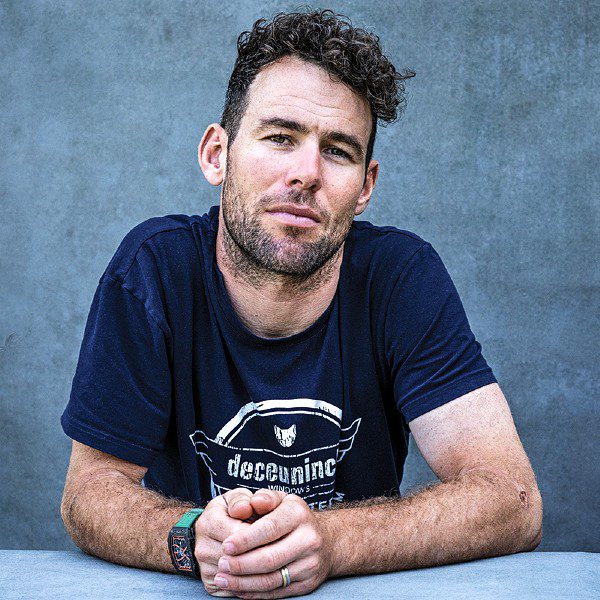Shed Those Pounds With Ease: Unleash The Power Of Bike Riding For Weight Loss

To me, it doesn’t matter whether it’s raining or the sun is shining or whatever: as long as I’m riding a bike I know I’m the luckiest guy in the world.
Mark Cavendish
Welcome to our informative article on the fat-burning potential of bike riding for weight loss. If you're looking for an effective and enjoyable way to shed those extra pounds, cycling could be the answer you've been searching for.
In this article, we will explore the benefits of bike riding for weight loss and provide you with valuable insights and strategies to help you achieve your weight loss goals.
Key Takeaways
- Bike riding is an effective method for weight loss and fat burning.
- Cycling can be both enjoyable and sustainable, making it a great long-term exercise option for weight management.
- Bike riding helps improve cardiovascular health and overall fitness levels.
- Setting realistic goals and creating a strategic cycling plan is key to successful weight loss.
- Understanding the science behind fat burning and exercise can help optimise your cycling workouts.
Embarking On The Cycling Weight Loss Journey
Before starting your cycling weight loss journey, it is important to set realistic goals and understand the health benefits of cycling. By determining your starting point with an initial weigh-in and setting achievable weight loss goals, you can track your progress and stay motivated on your journey to a healthier you.
#1. The Initial Weigh-In: Setting Realistic Goals
To begin your cycling weight loss journey, it is essential to know where you currently stand. Conducting an initial weigh-in allows you to establish your starting weight and track your progress as you work towards your weight loss goals. Remember to set realistic goals that are specific, measurable, attainable, relevant, and time-bound (SMART) to ensure a successful and sustainable weight loss journey.
#2. Understanding The Health Benefits Of Cycling
Bike riding not only aids in weight management but also offers numerous health benefits. Cycling is a low-impact exercise that improves cardiovascular health, strengthens muscles, and increases endurance. It is an excellent way to burn calories and promote overall fitness.
Regular bike riding can reduce the risk of various health conditions, such as heart disease, obesity, and type 2 diabetes. It is also a sustainable form of transportation that promotes environmental well-being.
Optimising Your Power-To-Weight Ratio Through Cycling
Optimising your power-to-weight ratio is crucial for maximising your cycling performance and achieving your weight loss goals. A higher power-to-weight ratio means that you can generate more power relative to your body weight, allowing you to ride faster and more efficiently.
In this section, we will explore why power-to-weight matters in cycling and discuss strategies for maximising your performance on climbs, which is a key factor in improving your power-to-weight ratio.
How To Raise Power While Losing Weight
Find out if losing weight affects your FTP, how to lose weight while cycling, how to improve your power and more in this quick clip from episode 325 of the Ask a Cycling Coach podcast!
#1. Why Power-To-Weight Matters In Cycling
The power-to-weight ratio is a critical metric in cycling that determines your ability to perform well, especially in climbing. The power output you can generate is limited by your body weight, as a heavier weight requires more energy to move uphill. By decreasing your body weight while maintaining or increasing your power output, you can significantly improve your cycling performance on both flat and hilly terrains.
To improve your power-to-weight ratio, you have two options: increase your power output or decrease your body weight. While increasing power output is essential, reducing body weight is often more achievable and has a direct impact on your performance. By shedding excess body fat and improving your overall fitness through cycling, you can enhance your power-to-weight ratio and ride faster and more efficiently.
Join Our Mailing List
See how easily you can get fitter. Sign up to get your free PDF report on 10 Actions That Support Weight Loss sent to your inbox!
#2. Maximising Performance On Climbs
Climbing poses a significant challenge for cyclists due to the increased resistance and elevation gain. However, with the right strategies, you can maximise your performance on climbs and make significant improvements to your power-to-weight ratio.
One key strategy is to focus on building strength and endurance through specific hill training workouts. By incorporating hill repeats and sustained climbs into your training routine, you can develop the necessary muscular strength and cardiovascular endurance required for climbing. Additionally, practising climbing techniques, such as maintaining a steady cadence and shifting efficiently, can help you conserve energy and maintain momentum on steep ascents.
Another important aspect of improving your climbing performance is weight management. While losing excess body weight through a combination of healthy eating and regular cycling is beneficial for overall performance, it is crucial to strike a balance to maintain muscle mass and energy levels. Consult with a nutritionist or dietitian to create a sustainable eating plan that supports your cycling performance while promoting weight loss.
By optimising your power-to-weight ratio, you can unlock new levels of cycling performance and achieve your weight loss goals. Focus on both increasing your power output and managing your body weight effectively, and implement targeted training strategies to improve your climbing abilities. With consistent effort and determination, you'll be able to conquer challenging climbs and experience the thrill of cycling at your peak performance.


Creating An Effective Cycling Plan for Fat Loss
To achieve successful fat loss through cycling, it is important to create an effective cycling plan. This plan will not only help you burn calories and shed excess body fat but also ensure a healthy and sustainable weight loss journey. In this section, we will discuss the key considerations for creating a cycling plan that maximizes fat loss and preserves muscle.
Low Intensity vs High Intensity: What Works Best?
One of the main decisions you'll need to make when designing your cycling plan is determining whether to focus on low-intensity or high-intensity workouts. Low-intensity cycling refers to riding at a steady pace, where you can comfortably hold a conversation.
This type of workout primarily uses fat as fuel and is ideal for longer rides. On the other hand, high-intensity cycling involves shorter bursts of intense effort, pushing your heart rate and burning a higher number of calories in a shorter duration. Both approaches have their benefits, and the best choice depends on your individual goals and preferences.
Low-intensity cycling is particularly effective for longer rides as it allows your body to tap into fat stores and build endurance. This type of workout is great for aerobic fitness and can also aid in muscle preservation. High-intensity cycling, on the other hand, is known for its calorie-burning potential and can help you achieve significant fat loss in a shorter amount of time. It can also improve your anaerobic fitness and enhance your overall cycling performance.
Ultimately, the most effective approach to fat loss is often a combination of both low-intensity and high-intensity cycling. Varying your workouts can help prevent plateaus and keep you motivated. For example, you can incorporate longer low-intensity rides for building endurance and burning fat, while also adding shorter high-intensity intervals to challenge yourself and boost calorie expenditure.
Balancing Fat Loss And Muscle Preservation
When aiming to lose fat, it is essential to consider the preservation of muscle mass. While fat loss is the primary goal, preserving muscle is crucial for maintaining a healthy metabolism and achieving a toned physique. To strike the right balance, there are several strategies you can incorporate into your cycling plan.
Firstly, ensure you are fueling your body with adequate nutrition. Consuming a balanced diet that includes lean protein sources, whole grains, fruits, vegetables, and healthy fats can help support muscle preservation while promoting fat loss. Additionally, incorporating strength training exercises into your routine can help maintain and build muscle mass. Focus on exercises that target major muscle groups and complement your cycling workouts.
See How Easily You Can Get Fitter
Free & Instant Report Download
Another important factor in balancing fat loss and muscle preservation is recovery. Proper rest and recovery days are essential for allowing your muscles to repair and grow. Incorporate rest days into your cycling plan to prevent overtraining and optimise your overall progress.
| Low-Intensity Cycling | High-Intensity Cycling |
|---|---|
|
|
Unlock Your Body's Fat-Burning Potential Through Cycling
Cycling can unlock your body's fat-burning potential. By understanding the science behind lipolysis and exercise, you can strategically time your workouts to enhance fat loss during your cycling sessions.
#1. The Science Behind Lipolysis and Exercise
Lipolysis is the process through which stored fat is broken down and released into the bloodstream as fatty acids. During exercise, lipolysis is stimulated, leading to an increased utilisation of fat as fuel.
When you engage in cycling, your body requires a constant supply of energy. As you pedal, your muscles contract, creating a demand for fuel. Your body taps into fat stores to meet this demand, triggering lipolysis.
Regular cycling sessions can train your body to become more efficient at utilising fat as an energy source. This not only promotes fat burning but also helps to improve endurance and stamina.
#2. Strategic Exercise Timing For Enhanced Fat Loss
Strategic exercise timing can further enhance fat loss during your cycling workouts. By utilising targeted approaches, such as fast cycling or high-intensity interval training (HIIT), you can optimise your body's fat-burning capabilities.
Fasted cycling involves performing your cycling workouts in a fasted state, typically in the morning before breakfast. By exercising in a fasted state, your body relies primarily on stored fat for energy, promoting increased fat burning.
HIIT involves alternating between periods of high-intensity effort and short recovery periods. This type of training has been shown to increase metabolic rate and fat burning, even after the workout is completed.
Integrating strategic exercise timing techniques into your cycling routine can help you maximise fat loss and achieve your weight loss goals more effectively.
| Strategies | Effects |
|---|---|
| Fasted Cycling | Enhances fat burning by utilising stored fat as the primary energy source |
| High-Intensity Interval Training (HIIT) | Increases metabolic rate and promotes post-workout fat burning |
By incorporating strategic exercise timing techniques and understanding the science behind lipolysis, you can unlock your body's fat-burning potential and achieve enhanced fat loss through cycling.

Bike Riding For Weight Loss: Mixing Discipline With Enjoyment
When it comes to weight loss, bike riding offers the perfect balance of discipline and enjoyment. Not only is it a highly effective form of exercise for shedding those extra pounds, but it also allows you to experience the joys of being outdoors and exploring new places. By incorporating bike riding into your weight loss journey, you can make the process more enjoyable and sustainable in the long run.
#1. Finding Pleasure In The Path To Fitness
The key to enjoying your weight loss journey is to find pleasure in the process of getting fit. Instead of viewing exercise as a chore, try to shift your mindset and focus on the positive aspects of bike riding. Embrace the sense of freedom and adventure that comes with exploring different routes and landscapes. Take the time to appreciate the small victories along the way, such as improving your stamina or conquering a challenging hill.
Bike riding also offers an opportunity to connect with nature and enjoy the beauty of your surroundings. Whether you prefer scenic trails or bustling city streets, make it a point to choose routes that inspire and energise you. By immersing yourself in the experience and finding joy in every pedal stroke, you can turn your weight loss journey into something you look forward to.
Join Our Mailing List
See how easily you can get fitter.
Sign up to get your free PDF report on 10 Actions That Support Weight Loss sent to your inbox!
#2. Keeping The Weight Loss Journey Enjoyable And Sustainable
One of the keys to sustainable weight loss is to maintain an enjoyable and balanced approach. Avoid falling into the trap of restrictive diets or punishing workout routines that can quickly lead to burnout. Instead, focus on creating a healthy and sustainable lifestyle that allows you to continue bike riding for the long term.
Here are some tips to keep your weight loss journey enjoyable and sustainable:
- Set realistic goals: Establish achievable weight loss goals that align with your fitness level and lifestyle.
- Vary your rides: Don't stick to the same routes or intensity levels. Mix things up to keep your workouts interesting and challenging.
- Listen to your body: Pay attention to how your body feels during and after rides. Rest when needed and make adjustments to your training plan accordingly.
- Find a support system: Surround yourself with like-minded individuals who share your passion for bike riding and weight loss. Join local cycling clubs or online communities to connect with others on similar journeys.
By following these tips and putting enjoyment and sustainability at the forefront of your weight loss journey, you can create lasting habits and experience the transformative power of bike riding.
The Bottom Line
In conclusion, bike riding is a highly effective method for weight loss that offers numerous benefits. Throughout this article, we have explored how cycling can contribute to a successful weight loss journey by burning calories and shedding excess body fat.
Ultimately, bike riding provides an enjoyable and sustainable approach to weight loss. Whether you prefer leisurely rides or more challenging routes, cycling allows you to pursue your weight loss goals while having fun. So grab your bike, hit the open road, and embrace the power of cycling in your weight loss journey.
Embrace Inspiration:
Like What You Read? Be Sociable, Comment, And Share It! Thanks.
FAQ
Bike riding is a great way to lose weight because it is a form of aerobic exercise that helps you burn more calories and create a calorie deficit, which is essential for weight loss.
Yes, bike riding can help you lose belly fat as it is a way to lose weight overall, and as you lose weight, you’ll burn fat, including the fat around your belly.
Indoor cycling is an effective way to burn calories, and it can help you lose weight by providing a challenging workout that contributes to a calorie deficit.
Yes, biking is an effective way to burn fat as it is a form of high-intensity aerobic exercise that can help with weight loss and fat burning.
Yes, riding a stationary bike can help with weight loss as it provides a low-impact, high-calorie-burning exercise that can contribute to a calorie deficit.
The fat-burning zone in cycling refers to the intensity at which your body uses a higher percentage of fat for fuel, and it can be a beneficial level for weight loss.
The number of calories you burn while cycling depends on various factors, such as your weight, the intensity of the ride, and the duration, but it can be an effective way to burn calories and aid in weight loss.
Some top tips for using cycling to lose weight include incorporating high-intensity interval training, aiming for longer rides, and maintaining a calorie deficit through your diet.
Cycling can be a helpful component of a weight loss plan and can help you achieve your target weight when combined with a balanced diet and other forms of exercise.
Yes, cycling can contribute to burning belly fat as it is a form of exercise that can help you lose weight overall, which includes losing fat around your abdomen.
Join Our Mailing List
See how easily you can get fitter.
Sign up to get your free PDF report on 10 Actions That Support Weight Loss sent to your inbox!

